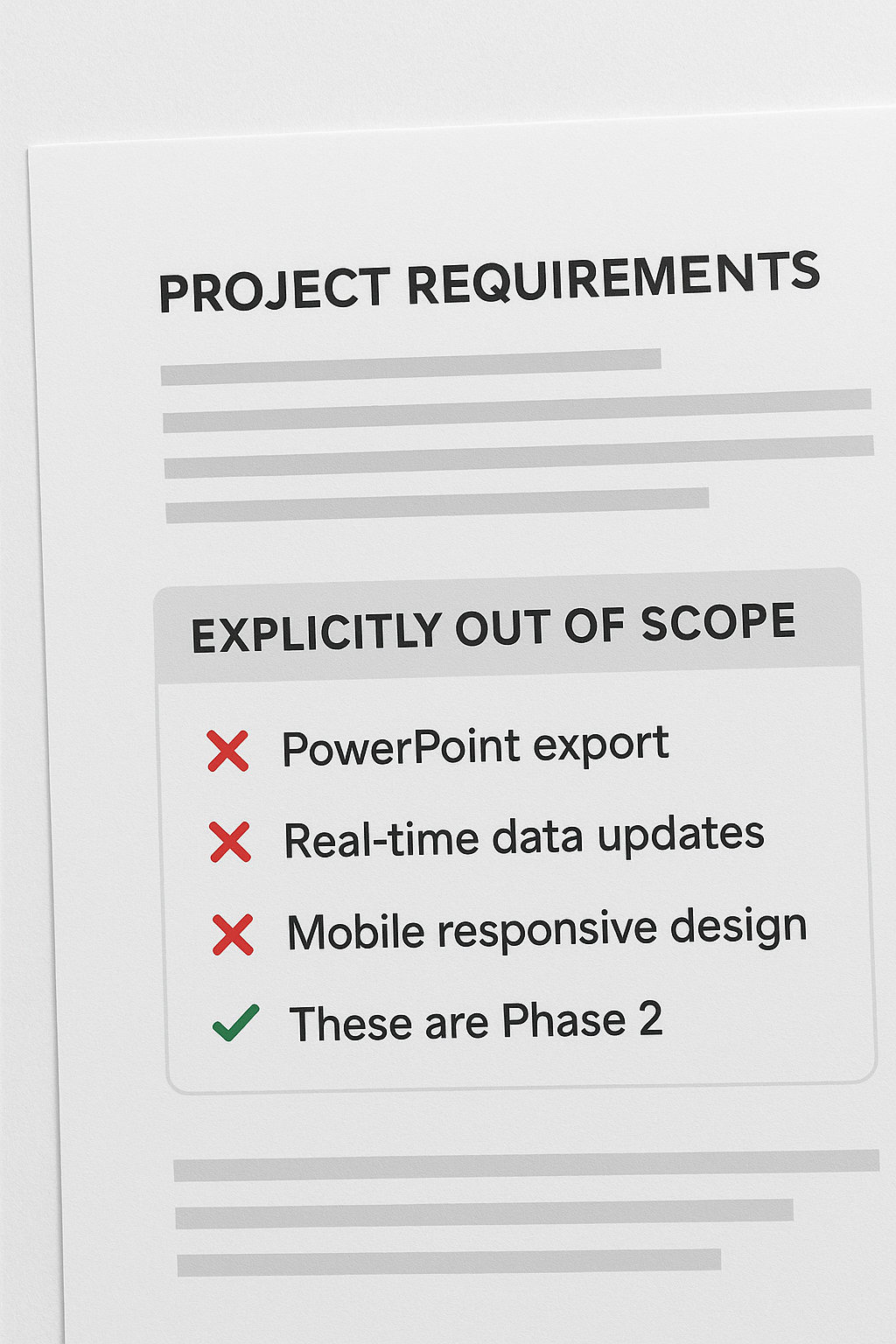November 24, 2025

The Explicit Out-of-Scope Section: My Secret Weapon for Project Trust
The projects where I list what we’re NOT doing are the ones that finish on time.
I learned this the hard way. A few years ago, I built a visualization tool that checked every box on the requirements list. Shipped on schedule. Stakeholders were thrilled.
Two weeks later: “Wait, it doesn’t export to PowerPoint?”
That feature was never in scope. But because I hadn’t explicitly said we WEREN’T building it, the expectation existed anyway.
Now every project doc gets this section:
Explicitly Out of Scope for Phase 1
Not just “nice to haves” or “future considerations.” A clear list of things people might reasonably expect but won’t get in this phase.
Here’s what mine typically include:
- Feature assumptions people make (like that PowerPoint export)
- Data sources we’re NOT integrating yet
- User groups we’re NOT supporting in v1
- Analyses or visualizations that seem related but aren’t included
- Performance targets we’re not optimizing for yet
Why this works:
It forces the hard conversations up front. When I write “Phase 1 will NOT include real-time data updates,” someone inevitably says “wait, we need that.” Perfect. Now we can discuss it before I’ve built the wrong thing.
It gives me cover during implementation. When scope creep appears (and it always does), I can point to this section and say “remember, we agreed real-time is Phase 2.” No one feels ambushed.
It builds trust through transparency. Stakeholders see I’m being honest about limitations rather than overselling what I can deliver.
The key: Revisit it regularly
I review the out-of-scope section at every project checkpoint. Sometimes priorities shift and something from “Phase 2” needs to move to “Phase 1.” That’s fine! The document isn’t a contract—it’s a communication tool.
The goal isn’t to never change scope. It’s to make sure everyone understands what’s changing and why.
Managing expectations is easier than managing disappointment.
Do you explicitly document out-of-scope in your project plans? What’s been your experience with scope creep?



